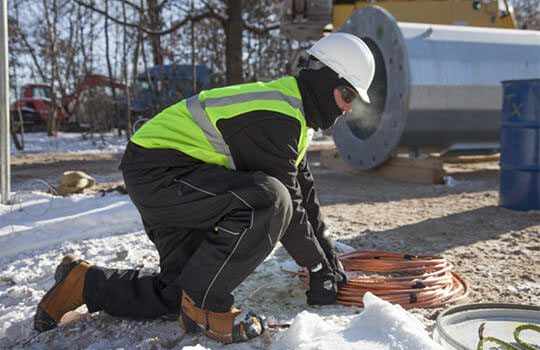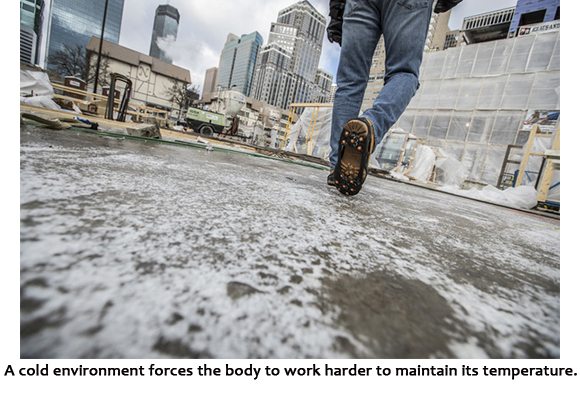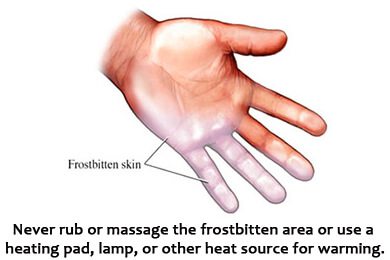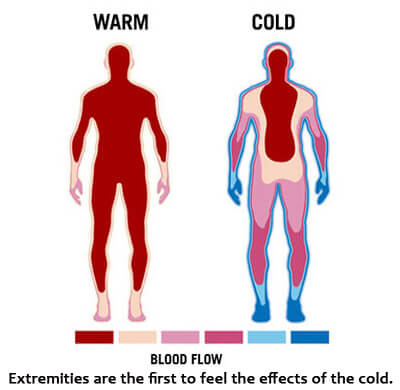 It’s important to know how to recognize hypothermia and frostbite on any job site, as well as other cold stress dangers that exist – and their treatments.
It’s important to know how to recognize hypothermia and frostbite on any job site, as well as other cold stress dangers that exist – and their treatments.
These conditions are more likely to occur with cold air temperatures, high wind speeds, damp air, contact with cold water or surfaces, or a lack of proper personal protective equipment (PPE).
Download talking points on recognizing cold-related conditions to share with your crew.
 Frigid dangers: How to recognize hypothermia and frostbite
Frigid dangers: How to recognize hypothermia and frostbite
Hypothermia, a condition characterized by an extreme low body temperature (and considered the most severe of the cold-related conditions), occurs when body heat is lost faster than what’s produced, and your core body temperature drops below 95 degrees Fahrenheit (35 degrees Celsius). What to look for:
- Shivering
- Poor coordination and slowing of pace
- Stumbling and clumsiness
- Dazed and confused behavior
- Slurred and slow speech
- Hallucinations or changes in personality
For a mild case, move to a warm area and stay active. Cover your head and body with dry clothes or blankets, and drink a warm (not hot) drink. For a moderate case, do the same as you would for a mild case, but also contact emergency medical personnel while attempting to re-warm your extremities. For a severe case, be gentle and don’t apply external heat to re-warm as hospital treatment is needed.
When it comes to frostbite, because of the way blood leaves the extremities to protect vital organs in the body’s core in cold environments, hands and feet are the most susceptible body parts. What to look for:
- White, grayish or bluish skin
- Cold, hard or waxy feel to the skin
- Itchiness, burning or numbness
- Blistering and hardening of skin (signs of extreme frostbite)
If you’re experiencing frostbite, leave the cold immediately, slowly warm the affected skin, place the frostbitten areas in warm (not hot) water, wrap the affected areas in a warm blanket, and seek emergency medical help right away.
WARNING: Do not rub or massage the frostbitten area or use a heating pad, heat lamp or other heat source for warming.
 Trench foot: The ‘wet cold’ danger
Trench foot: The ‘wet cold’ danger
Trench foot is a “wet cold disease” that occurs in damp or wet environments that are just above freezing. The name comes from WWI when soldiers developed the illness while waiting in the trenches for combat. What to look for:
- Numbness
- Swelling
- Blisters
To treat trench foot, remove wet socks and footwear, thoroughly clean your feet with warm water, dry your feet, don’t wear socks when sleeping or resting, and get medical attention ASAP.
More on how the body reacts to cold
- Energy is spent maintaining internal temperature.
- Blood is drawn away from extremities to the core.
- Exposed skin and extremities cool rapidly, increasing the risk of frostbite and hypothermia.
Early signs of heat loss include shivering, fatigue, confusion or disorientation. They can evolve and lead to blue skin, a slow pulse and even loss of consciousness.
 Talk to your crew
Talk to your crew
The reality is that work doesn’t stop when the temperature drops, so taking a few minutes before a shift to educate your crew on the signs, symptoms and causes of cold-related illnesses is a simple yet effective measure to increase awareness and reduce the risks. Check out these additional ways to fight cold conditions on the job site:
Ergodyne N-Ferno® 6815 Stretch Cap – Full Face
Ergodyne N-FERNO® Warming Packs
Ergodyne ProFlex® 819WP Extreme Thermal Waterproof Gloves
This article was drafted in partnership with Ergodyne. Read Ergodyne’s original article, “Recognizing hypothermia, frostbite and other common cold-related illnesses.”
Related posts
Winter shift scheduling tools for safety supervisors (FREE DOWNLOAD)
Thermal winter work gloves provide quality insulation in extreme cold